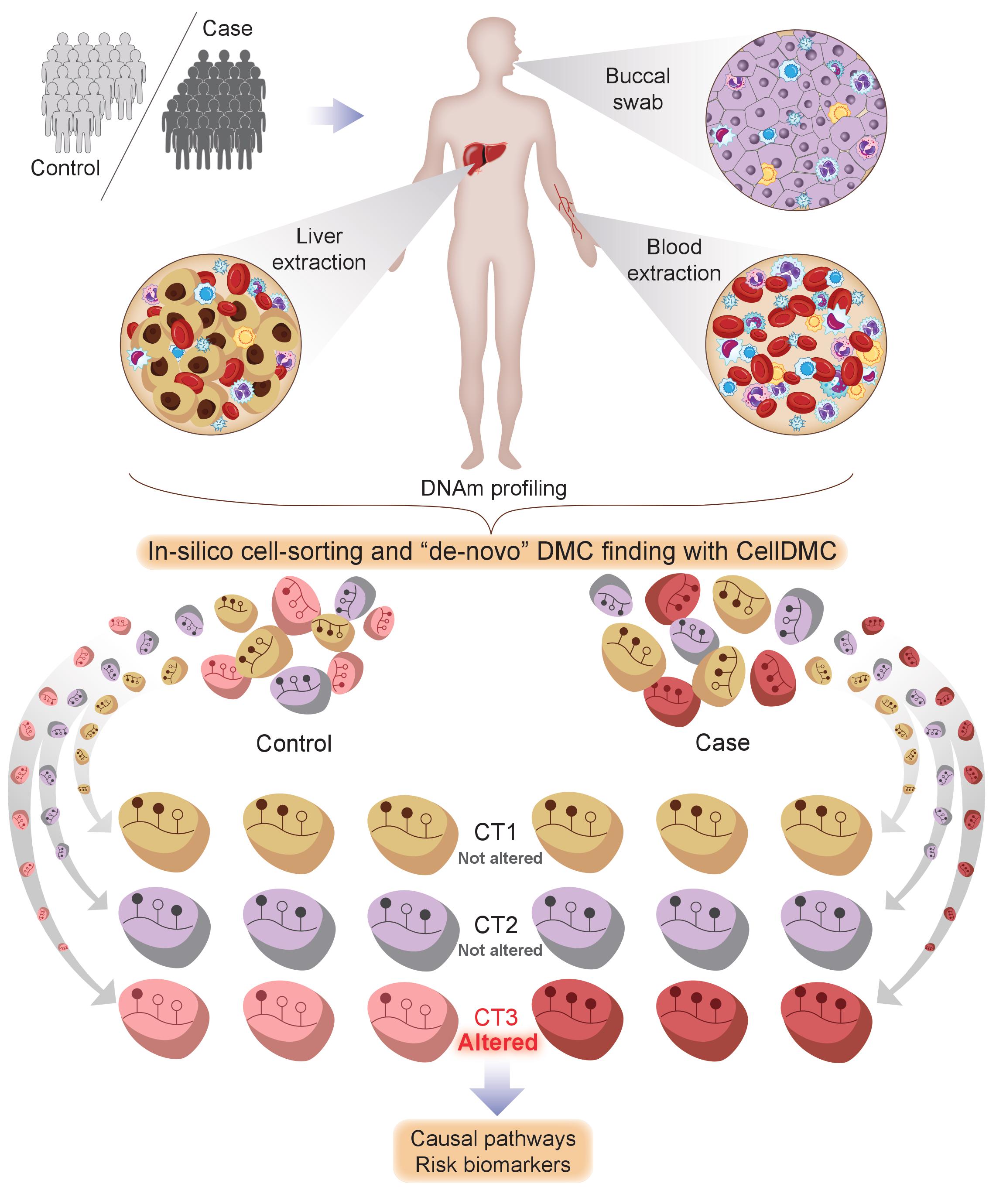- Home >> ALL News >> Highlights
Researchers Developed a Novel Statistical Algorithm that will Help the Identification of Epigenetic Pathways Causally Implicated in Disease
DNA methylation (DNAm) represents a covalent modification of DNA, which can regulate gene activity, and which is altered in response to disease risk factors.
The main aim of Epigenome-Wide Association Studies (EWAS), which measure DNAm genome-wide in large numbers of individuals, is to identify DNAm changes that correlate with disease risk. However, an outstanding challenge which hampered this aim is posed by cell-type heterogeneity: tissues profiled in EWAS are complex mixtures of many different cell-types, each with its own characteristic DNA methylation profile, which can therefore confound analyses. Thus, until now, it has not been possible to identify the specific cell-types and epigenetic pathways where DNAm changes happen.
Under the guidance of Prof. Andrew TESCHENDORFF from CAS-MPG Partner Institute for Computational Biology, Shanghai Institute of Nutrition and Health, Chinese Academy of Sciences, PhD student ZHENG Shijie and colleagues developed a novel statistical algorithm called “CellDMC”, which allows to pinpoint not only the specific genomic sites that are altered, but also in which cell-types these DNAm alterations occur. Researchers demonstrate how their algorithm can identify DNAm changes with over 90% sensitivity in scenarios where current state-of-the-art methods would fail. Researchers tested their algorithm on several real EWAS. The results revealed that many DNAm changes associated with Rheumatoid Arthritis occur in one particular blood cell subtype (B-cells), suggesting that alterations in B-cells is particular important in the etiology of this disease. In another application, their algorithm revealed DNAm changes in normal cells exposed to smoke carcinogens, that are also seen in the cell of origin of lung cancer, thus helping to pinpoint potential epigenetic causal pathways linking smoking to this cancer.
What makes this study particularly significant is the fact that CellDMC will allow researchers in the EWAS community to identify the relevant cell-types altered in disease, without the need for laborious cell-sorting to purify samples, or without the need to generate single-cell methylomes, both expensive and impractical procedures in the context of EWAS. The ability to detect the altered cell-types associated with disease and disease risk will facilitate the identification and development of epigenetic disease risk biomarker assays, in line with the aims of P4 Medicine.
This work was published in Nature Methods under the title “Identification of differentially methylated cell-types in Epigenome-Wide Association Studies” on November 30th, 2018.
This study was funded by the National Natural Science Foundation of China and Chinese Academy of Sciences.

CellDMC identifies differentially methylated cell-type(s)
(Image by Prof. Andrew TESCHENDORFF's Group)
Media Contact:
WANG Jin (Ms.)
Shanghai Institute of Nutrition and Health,
Chinese Academy of Sciences
Email: sibssc@sibs.ac.cn


